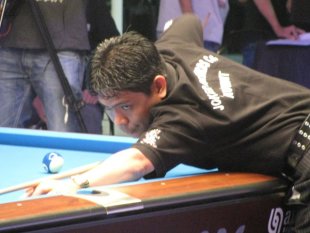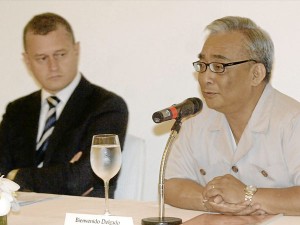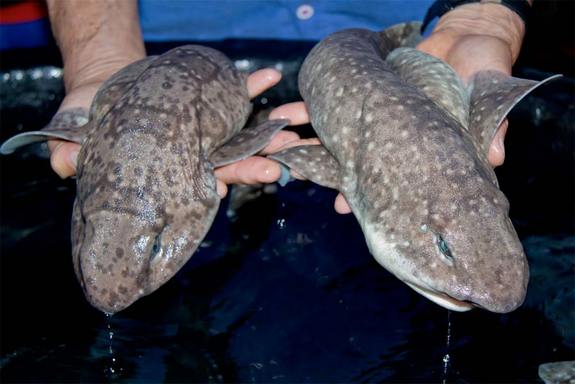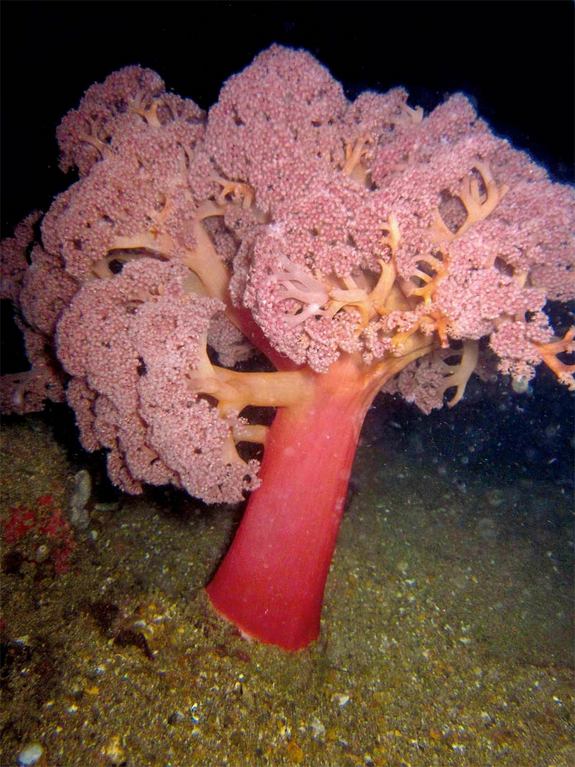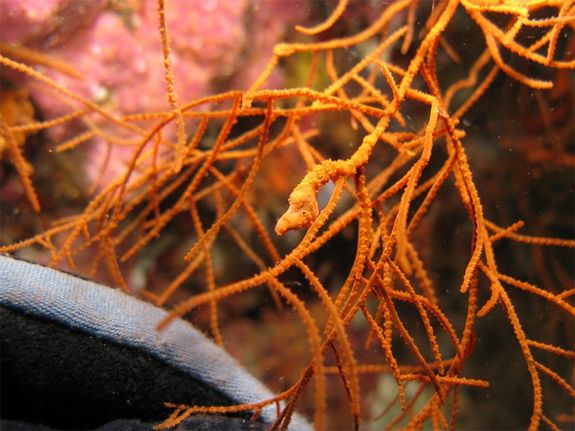 |
| The lechon, whole pig roasted in a pole, has been called "best pig ever" by celebrity chef Anthony Bourdain. Photo by Karen Flores, abs-cbnNEWS.com |
MANILA, Philippines - Japan is known for its sushi, America for its hamburgers, Italy for its pizza, France for its foie gras (fatty liver) and China for its noodles.
But what about the Philippines?
Through the years, several people have tried to describe what Filipino cuisine is all about, and most of them say the dish that best defines our country is adobo, or meat (from pork and chicken to seafood and offal) braised in garlic, vinegar and soy. Each household, town, province and region has a different way of preparing this otherwise simple viand.
Others say it's lechon, or whole pig roasted in a pole, usually served in fiestas and special occasions. Well-known boar buff Anthony Bourdain has called this Filipino delicacy the "best pig ever," making it more attractive to foreigners and locals who have a bad case of colonial mentality.
Some beg to differ, saying that the
sinigang or sour soup is as Filipino as you can get, while a handful want our country to be associated with dishes like
tocino (sweetened cured meat),
inasal (roast chicken),
paksiw (vinegar-based stew),
longganisa (sweet or spicy sausage),
binakol (warm chicken soup cooked with coconut water),
dinuguan (a savory stew made of pig's blood, meat and innards),
tinapa (smoke-cured fish), and
chicharon (deep-fried pork rinds).
And that's barely the tip of the iceberg.
Filipino food is way too diverse to be associated with a single dish, said Chef Giney Villar, owner of Adarna Food and Culture restaurant in Quezon City and a big advocate of Filipino heirloom cuisine.
This shouldn't be a problem at all, she said, as it only makes our food more interesting.
"[Filipino cuisine] is worth over 300 years of Spanish influence and [from] other cultures. There's so much more to Filipino food than adobo," Villar said.
"Instead of focusing on one main Filipino dish, same as Japan's sushi or Italy's pizza, we should celebrate the diversity of Filipino cuisine."
Indeed, we Filipinos love variety, even in taste. This is clearly seen in
halo-halo, a mixture of shaved ice, evaporated milk, beans, caramelized fruits and starches, different colored jelly cubes,
pinipig (pounded crushed young rice),
sago (tapioca),
nata de coco(coconut gel),
kaong (sugar palm fruit) and other sweet things. The icy treat is usually topped with
leche flan (custard),
halaya (purple yam pudding) or ice cream, or a combination of the three.
And in most cases, a Filipino dish has many different flavors. The
kare-kare or peanut stew, for instance, is rich, creamy and mildly sweet at one end, and savory and spicy (because of the meat and the accompanying
bagoong or shrimp paste) at the other.
"There are just so many things going on [with Filipino cuisine]. There's still a lot to learn," Villar said.
The fusion trend
This long list of Filipino dishes does not yet include fusion cuisine, created primarily by adventurous cooks and chefs trained abroad.
A number of restaurants in the country serve
sinigang na corned beef, where salt-cured meat shreds instead of the usual pork or beef cubes are swimming in sour broth; crispy
binagoongan or fried pieces of pork tossed in shrimp paste; and lamb adobo, a tastier and strong-smelling version of an old Filipino favorite.
“There are 2 types of Filipino restaurants today: traditional and innovative. Fusion is not necessarily fusing one cuisine to another, but more of mixing techniques,” said TravelTales Inc. president Tracy Santiago.
TravelTales Inc. has been conducting food tours of culinary hotspots such as Pampanga in Central Luzon for years. Here, participants can discover the best food prepared in private farms and houses.
Santiago believes that nothing beats good old home cooking, but said that she is still very much open to fusion cuisine.
“It’s [fusion] something that cannot be stopped. I do food tours to show how Filipino food has evolved. I want to show them the original, where it all came from,” she explained.
Santiago noted how Filipino cuisine continues to grow, thanks not only to fusion dishes but also to the emergence of food blogs, social networks, and cheap airfare.
When asked to describe Filipino food, she said, “For me, what defines Filipino food is the flavor: salty, sour,
masarsa (saucy), strong in garlic and seasoning, unlike other Southeast Asian dishes that are more on herbs.”
“We name our food after the [cooking] process:
ginataan (with coconut milk),
inihaw (grilled). Very rich, how we call our own dishes. Very unique.”
Promoting our food
Chefs and other groups each have their own way of introducing Filipino cuisine to their fellowmen and to people from different parts of the globe.
Some, like Villar, want to “hew as closely to the original,” while others prefer to give local cuisine a different, more sophisticated twist.
“A lot of chefs are doing a good job. It’s helping us grow,” she said.
Villar noted how there is a resurgence of interest in “patriotistic” cuisine, thus the popularity of themed restaurants, weekend markets and food tours.
Unfortunately, there are still many Filipinos who consciously stay away from local cuisine in the belief that “foreign food is superior.”
Villar and Santiago are only 2 of the many Filipinos who strive to put the country’s diverse cuisine on the world map.
It is a long shot, they said, but it’s still worth a try.
“We can have a restaurant that serves food from different parts of the Philippines, and leave them wanting more. They can then visit the country and sample our many different dishes,” Villar said.
“We can put one Filipino restaurant in every country to represent different regions. I think we’ll be successful,” Santiago ended.










